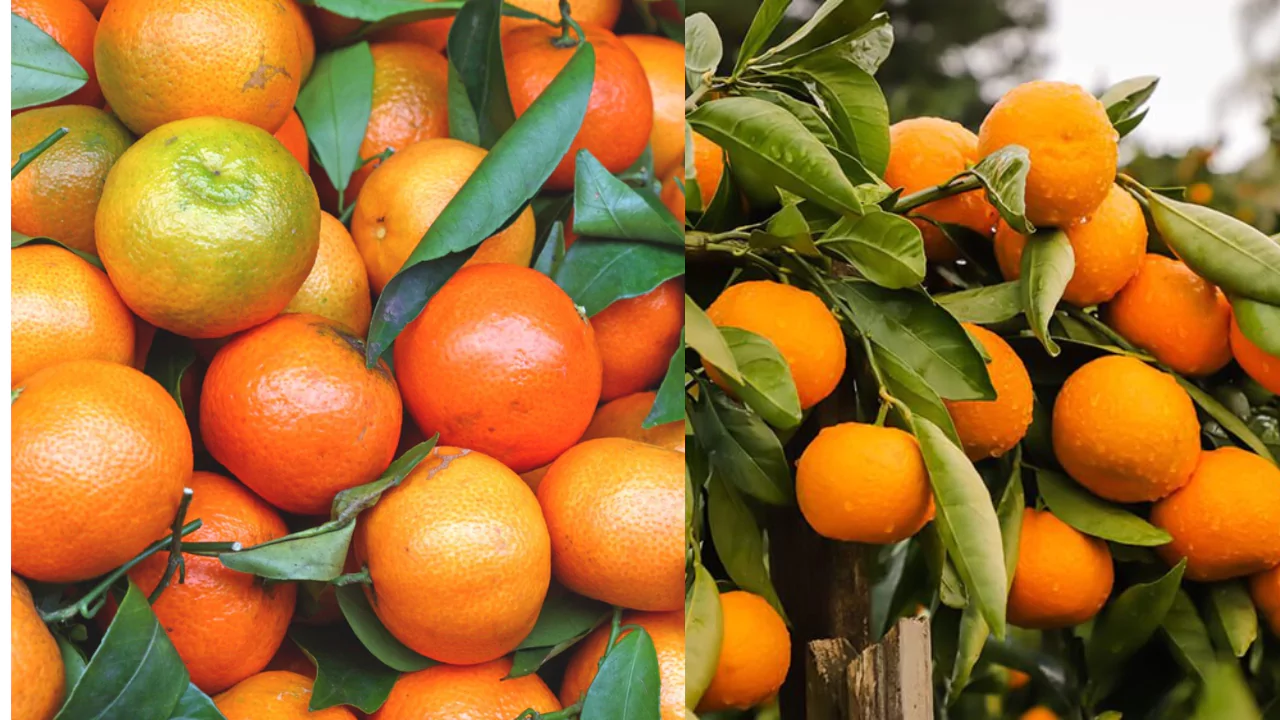
While similar to oranges, both mandarins and clementines are smaller, sweeter, easier to peel citrus fruits. But what distinguishes a mandarin from a clementine?
Since the two fruits are so similar, it is easy to see why some people think these are simply two words for the same fruit. However, that is not the case. Continue reading to understand the differences between mandarins and clementines in regard to botany, appearance, taste, and nutrition.
Mandarins vs. Clementines: Botany
In summary, clementines are a variety of mandarin. They are hybrids of a mandarin and a sweet orange. This means that not all mandarins are clementines, but all clementines are mandarins.
- The botanical name for mandarins is Citrus reticulata. The term “Reticulata” is a Latin term that translates to “reticulated” which is a net-like pattern. Mandarins were given this name due to the net-like interlaced pattern formed by the pith, which is the spongy white tissue between the flesh and the rind.
- The botanical name for clementines is Citrus reticulata ‘Clementine’.
- Mandarins are among the earliest and most basic citrus fruits. They originated in Southeast Asia and are ancestors of all other varieties of citrus fruit. Interestingly, they are actually a type of tangerine.
- According to one story, clementines were discovered by a monk living in Algeria in 1902 when he found a natural hybrid of the Chinese mandarin and sweet orange in the mandarin garden of the orphanage where he lived.
- Mandarins are not a type of orange (making the common phrase “mandarin orange” technically incorrect). Instead, they’re a variety of tangerine.
- Clementines are sometimes called zipper oranges or kid glove oranges because of how easy it is to peel them. California clementines are sometimes called Christmas oranges because of their seasonal availability. .
Mandarin Oranges vs. Clementines: Appearance
- Mandarins have a darker complexion than oranges. Their skin is also easier to peel compared to oranges due to being looser. Clementines likewise have loose skin that makes them easy to peel.
- Clementines are the smallest type of mandarin orange, which makes both mandarins and clementines smaller than oranges. They are both slightly flattened at the top and bottom, giving them a round shape.
- Generally, a mandarin or a clementine will break into segments more easily than would an orange.
Mandarins vs. Clementines: Taste
- Some types of mandarins have seeds while others are seedless. Clementines, however, are always seedless.
- Both types of Mandarin and clementine are sweeter than oranges and clementines are considered to be sweeter than other mandarins.
Mandarins vs. Clementines: Nutrition
Nutrition Mandarins and clementines share almost the same nutrition profile with clementines containing, slightly more vitamin C than mandarins. In contrast, mandarins are the only ones who contain Vitamin A.
- Caldoric value for an average clementine is 35 calories and a mandarin is 40 calories.
- The quantity of protein and fat found in mandarins and clementines is both negligible.
- Carbohydrate value of mandarins and clementines is 9-10 grams where 1 g is fiber.
- Clementine holds the value of Vitamin C 36 milligrams which is 40% of recommended daily value, where as mandarin holds the vitamin value of 20mg which is 23% of daily value.
- In case of Vitamin A clementines do not hold, but mandarins hold 17% of the value recommended giving in the formula of carotenoids.
- Flavanoids and pheonols peer which have claimed to be offered offers by both clementines and mandarins cancer.
Now, you should have an understanding of the distinction between mandarins and clementines. Not only that, but you have a greater understanding of that distinction than the average person.
In essence, these two fruits are rather closely related. The greatest difference is that clementines are a subspecies of mandarins, which are a group of several other species that also includes clementines, satsuma, tangerines, and other species, whereas clementines are hybrids of mandarins and sweet oranges.
This may be the most fundamental way to explain the relationship between clementines and mandarins.